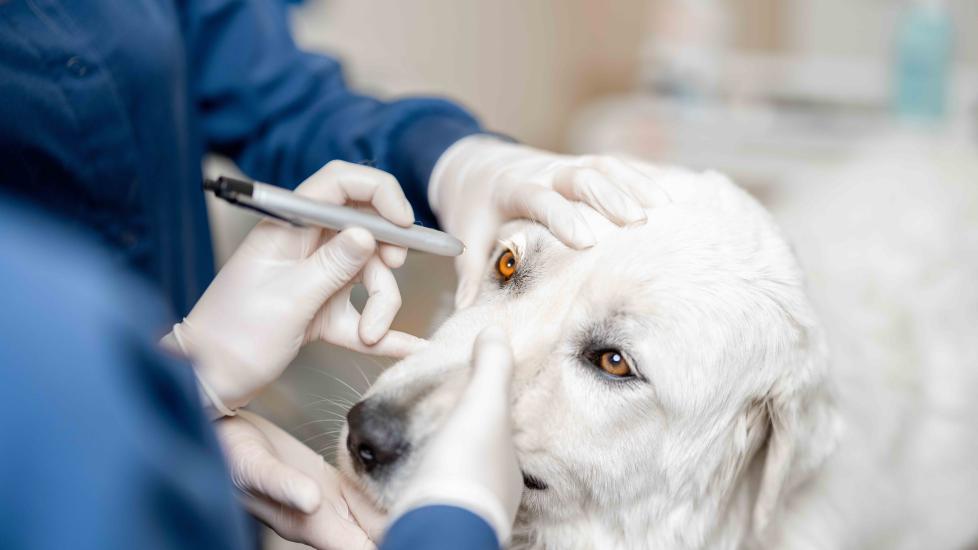Title: Understanding Redness in Canine Eyes: Causes, Concerns, and Care
Introduction:
In the world of our canine companions, their eyes are windows to both health and happiness. As pet parents, it’s crucial that we keep a watchful eye on these delicate orbs, especially when they start to show signs of redness. While this change may be subtle at first, it could signal various issues, from minor irritations to serious conditions. This article aims to illuminate the reasons behind red eyes in dogs, how to identify concerning symptoms, and what proactive steps you can take for your pup’s well-being.
Causes of Doggie Eye Redness:
1. Allergies: Environmental allergens like pollen, dust mites, or even certain foods can trigger allergic reactions, leading to inflammation and reddening around the eyes.
2. Infections: Bacterial or viral infections such as conjunctivitis (pink eye) often manifest with telltale signs of redness and discharge.
3. Dry Eye (Keratoconjunctivitis Sicca): A lack of adequate tear production can cause dryness and irritation, potentially resulting in redness.
4. Tumors or Trauma: More severe cases might involve physical trauma or the presence of tumors near the eye, which can lead to blood vessels dilating and causing red hue.
5. Medications or Medicated Shampoos: Sometimes, ingredients in topical treatments or medications can induce an adverse reaction, presenting as red eyes.
6. Breed Predispositions: Certain breeds have proclivities towards specific eye ailments due to genetic predisposition. For example, Bulldogs and Pugs often deal with brachycephalic airway syndrome, which can affect eye health.
Identifying Concerning Symptoms:
While mild redness is not uncommon and can resolve itself without intervention, persistent or worsening symptoms should prompt veterinary attention. Look out for excessive tearing, discharge, squinting, pawing at the face, or if your dog avoids bright lights. These could indicate more significant problems requiring professional diagnosis and treatment.
Care for Your Furry Friend’s Peepers:
1. Regular Check-ups: Schedule routine exams with your vet to monitor eye health and catch early signs of trouble.
2. Environmental Control: Minimize exposure to potential allergens by keeping your home clean, using HEPA filters, and considering hypoallergenic bedding materials.
3. Hydration Is Key: Encourage plenty of water intake to support optimal hydration levels and tear production.
4. Nutrition Matters: Ensure your dog has a balanced diet rich in essential fatty acids that contribute to healthy skin and coat, including around the eyes.
5. Keep It Clean: Regularly clean your dog’s eyes with a gentle saline solution designed specifically for pets to remove debris and reduce irritation.
6. Consult Professionals: If you suspect any underlying issue, consult with a veterinarian immediately. They can provide accurate diagnoses and recommend appropriate therapies.
7. Supervise Playtime: Protect your dog’s eyes during play by ensuring toys are safe and not overly rough. Supervision also helps prevent accidental injuries.
Conclusion:
The bond between humans and their four-legged friends is built upon trust and care. By understanding the causes of red eyes in dogs and knowing how to recognize concerning symptoms, you become better equipped to maintain your pet’s ocular health. Remember, prevention is key, but so is timely action when necessary. With vigilance and informed actions, you can help ensure your beloved pooch maintains those sparkling peepers for many joyful years together.
